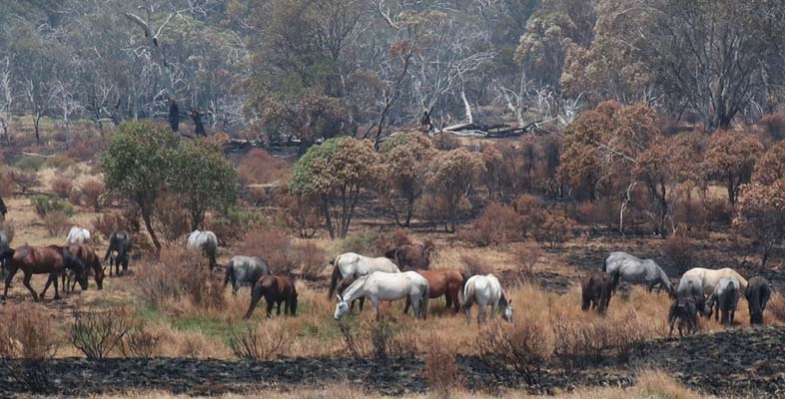In November the results of an aerial survey of feral horse numbers was released. The numbers have increased by more than 170% in the past five years. In the most populated area, North Kosciuszko National Park, the 2019 numbers are almost five times the 2014 numbers (see Table 1).
These numbers of horses are having a huge impact on alpine species and ecosystems. Horses create tracks through alpine swamps causing the water to drain away. They damage vegetation along streams that are essential for the survival of threatened species such as the Corroboree frog and Stocky Galaxia fish. These streams are the headwaters of the Murray and Murrumbidgee Rivers. Horses also pose a risk on roads. The North Kosciuszko area, that has the highest number of horses, is also an area badly affected by the fires. So, the horses will move into the undamaged parts of the north placing great pressure on alpine vegetation already stressed by drought.
The NSW Government has virtually completely cut the program to remove the horses from the park. Only 99 were removed in 2019 and none in 2017 and 2018. Thanks to the influence of the leader of the National Party, John Barilaro, the horses are treated as having heritage value despite the huge damage they are doing to the sensitive alpine vegetation and animal species. The successful program of aerial culling has been terminated.
Hope for change now rests with the new feral horse management plan being developed by the recently established Kosciuszko National Park Wild Horse Community Advisory Panel and the Wild Horse Scientific Advisory Panel.
The Scientific Committee said the draft plan for action will be open for comment in February 2020 to meet NSW environment minister Matt Kean’s deadline for a final plan by 1 May 2020. This rapid timeframe is essential as substantial control measures should be implemented straight away before winter conditions arrive.


